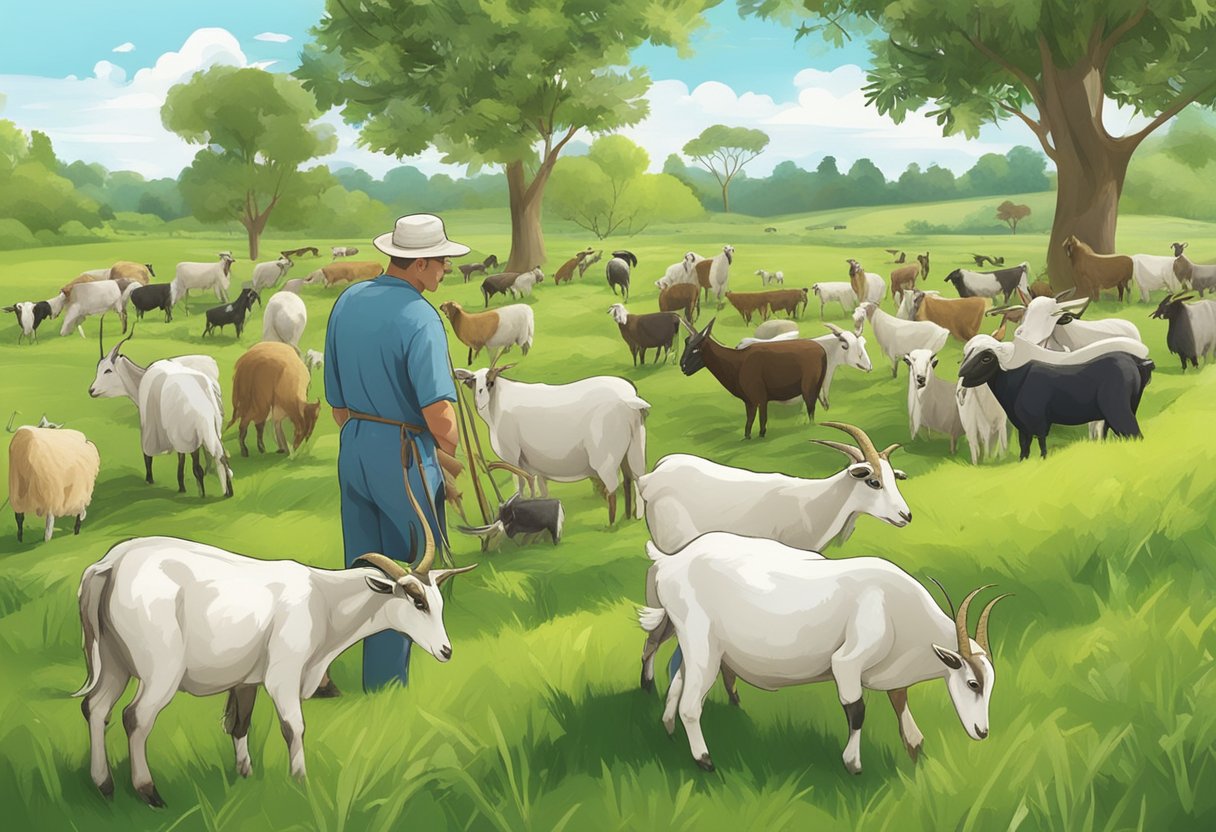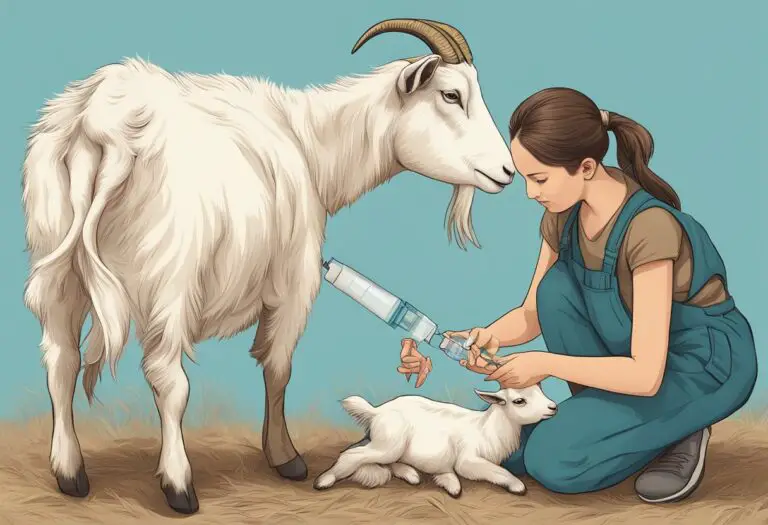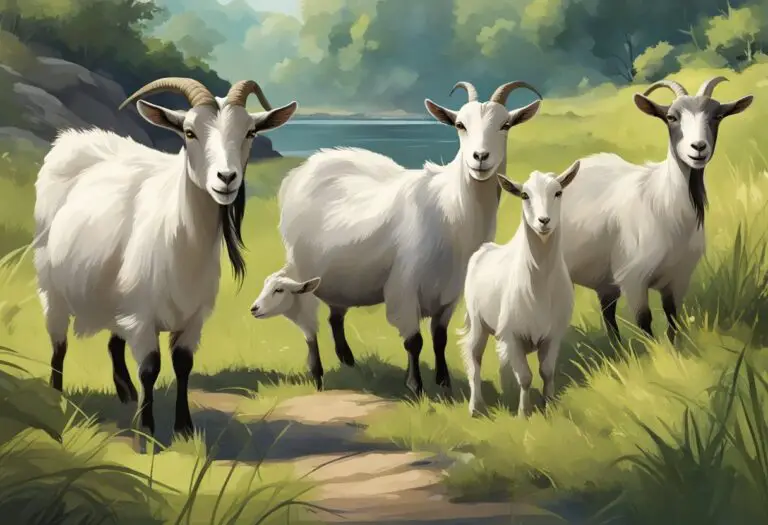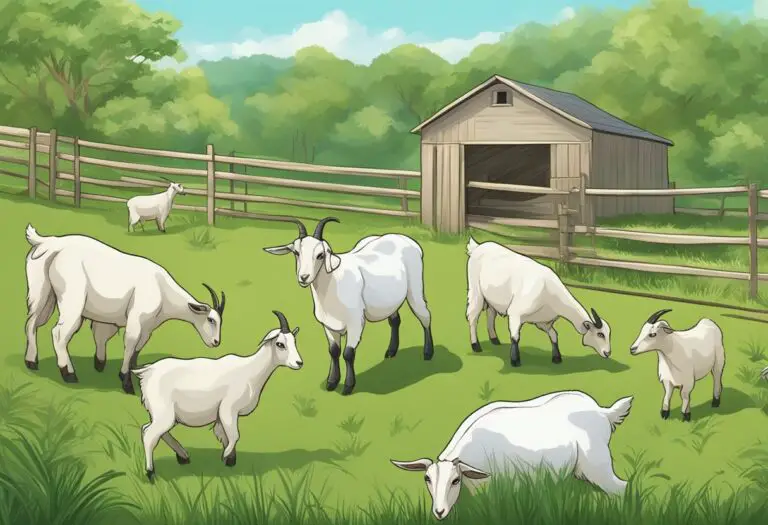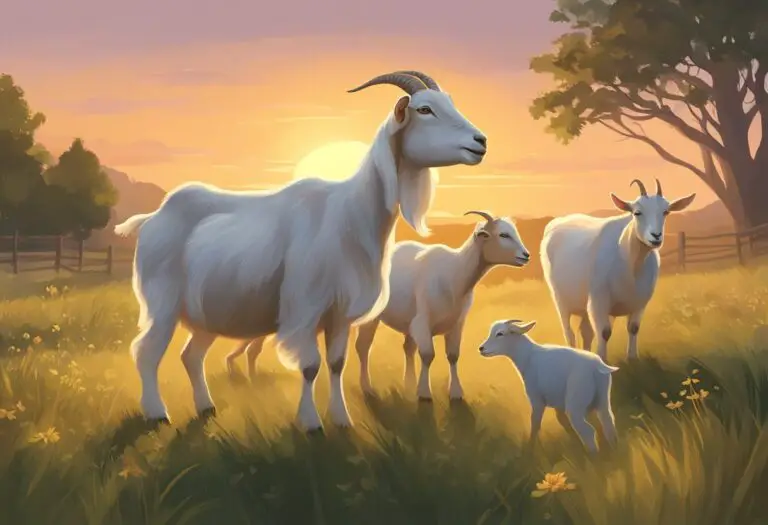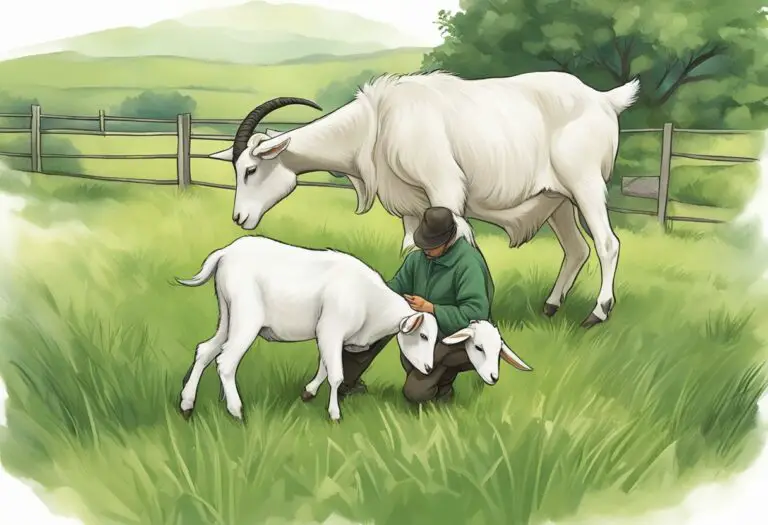Does Breed Matter for Goat Milk Production?
Breed selection is a crucial aspect of goat farming. Farmers must choose the right breed to ensure optimal milk production and quality. However, the question remains: does breed matter for goat milk production?
There are many different breeds of goats, each with its own unique characteristics. Some breeds are known for their high milk production, while others are raised for their meat or fiber. When it comes to milk production, some farmers believe that breed plays a significant role in determining the quality and quantity of milk produced.
While breed is important, it is not the only factor that affects milk production. Other factors such as diet, environment, and management practices also play a crucial role. Therefore, it is important to consider all of these factors when selecting a breed for milk production.
Importance of Breed in Goat Milk Production

The breed of a dairy goat is an essential factor that affects milk production. Some goat breeds are known for their high milk production, while others are known for their quality of milk. The breed of a dairy goat also determines the butterfat content and protein levels in the milk.
The Alpine, Saanen, and Toggenburg breeds are the most common dairy goat breeds in the United States. These breeds are known for their high milk production, with an average of 1-3 gallons of milk per day. The Nubian breed is also a popular dairy goat breed, known for its high butterfat content in milk.
In contrast, meat goat breeds such as the Boer and Kiko are not typically used for milk production. These breeds have been selectively bred for meat production, resulting in lower milk production and lower quality milk.
It is important to note that within each breed, there can be variations in milk production and milk quality. Factors such as genetics, nutrition, and management practices can all affect a dairy goat’s milk production.
In conclusion, the breed of a dairy goat plays a crucial role in milk production, butterfat content, and protein levels. Farmers and producers must carefully consider the breed of their dairy goats to ensure optimal milk production and quality.
Factors Affecting Milk Yield and Composition

Genetic Factors
One of the primary factors affecting milk yield and composition in goats is genetics. Different breeds of goats have varying milk production potential, with some breeds producing more milk than others. For instance, the Saanen and Alpine breeds are known for their high milk production, while the Nigerian Dwarf breed produces less milk.
In addition to breed, individual genetics also play a role in milk production. Some goats within a breed may produce more milk than others due to genetic factors such as udder capacity and lactation length.
Environmental Factors
Environmental factors such as temperature, humidity, and lighting can also impact milk yield and composition. Goats prefer cooler temperatures and may produce less milk in hot and humid conditions. Additionally, changes in lighting patterns can affect a goat’s natural rhythms and potentially impact milk production.
Nutritional Factors
Finally, nutritional factors play a significant role in milk yield and composition. Goats require a balanced diet with adequate protein, fiber, and minerals to produce milk. Lack of proper nutrition can lead to reduced milk production and lower quality milk.
In addition to the quality of the diet, the amount of feed and water intake also impacts milk production. A goat that is underfed or dehydrated may produce less milk than a goat with access to plenty of feed and water.
Overall, a combination of genetic, environmental, and nutritional factors all contribute to milk yield and composition in goats. Understanding and optimizing these factors can lead to improved milk production and quality.
Common Dairy Goat Breeds

Dairy goats are popular among small farmers and homesteaders for their milk production. There are several breeds of dairy goats, each with its own unique characteristics. This section will discuss the most common dairy goat breeds.
Saanen
Saanen goats are one of the most popular dairy goat breeds in the world. They are known for their high milk production and calm temperament. Saanen goats are usually all white or cream-colored, with short hair and erect ears. They are a large breed, with does weighing around 150 pounds and bucks weighing up to 200 pounds.
Nubian
Nubian goats are another popular breed of dairy goat. They are known for their high butterfat content in their milk, which makes it great for cheese and butter production. Nubian goats come in a variety of colors and have long, floppy ears. They are a medium-sized breed, with does weighing around 120 pounds and bucks weighing up to 170 pounds.
Alpine
Alpine goats are a hardy breed that can adapt to a variety of climates. They are known for their high milk production and sweet, mild-tasting milk. Alpine goats come in a variety of colors and have erect ears. They are a medium to large-sized breed, with does weighing around 135 pounds and bucks weighing up to 175 pounds.
Toggenburg
Toggenburg goats are a Swiss breed that is known for their hardiness and adaptability. They are known for their high milk production and their milk’s unique taste, which is great for making cheese. Toggenburg goats are usually brown with white markings and have erect ears. They are a medium-sized breed, with does weighing around 120 pounds and bucks weighing up to 150 pounds.
LaMancha
LaMancha goats are a unique breed that is known for their short, almost non-existent ears. They are a calm and friendly breed that is great for small farms and homesteads. LaMancha goats come in a variety of colors and have short hair. They are a medium-sized breed, with does weighing around 130 pounds and bucks weighing up to 170 pounds.
In conclusion, each of these common dairy goat breeds has its unique characteristics and advantages. When choosing a breed, it’s essential to consider your specific needs and goals for milk production.
Comparative Analysis of Milk Production by Breed

When it comes to goat milk production, breed plays a significant role in determining the quality and quantity of milk produced. Some breeds are known for their high milk production, while others are valued for their milk’s rich flavor and butterfat content.
One of the most popular breeds for milk production is the Saanen. These goats are known for their high milk production, with some individuals producing up to 3 liters of milk per day. Additionally, Saanen milk has a mild taste and low butterfat content, making it ideal for cheese and yogurt production.
Another popular breed for milk production is the Nubian. Nubian goats are known for their rich, creamy milk, which has a high butterfat content. However, Nubians tend to produce less milk than Saanens, with an average of 1-2 liters per day.
The Alpine breed is another popular choice for milk production. These goats produce a moderate amount of milk, with an average of 2-3 liters per day. Alpine milk has a slightly sweet taste and a medium butterfat content, making it a versatile choice for various dairy products.
Other breeds, such as the LaMancha and Toggenburg, also produce high-quality milk, but in smaller quantities. Ultimately, the breed of goat chosen for milk production will depend on the individual’s specific needs and preferences.
In conclusion, breed does matter for goat milk production, as each breed has its unique characteristics that affect milk quality and quantity. By choosing the right breed, goat farmers can ensure that they produce high-quality milk that meets their needs.
Breeding Strategies for Enhanced Milk Production

Breeding plays a crucial role in determining the milk production potential of goats. Selecting the right breed and breeding strategies can significantly enhance milk production in goats. Here are some breeding strategies that can help improve milk production in goats:
1. Selecting the Right Breed
Not all goat breeds are created equal when it comes to milk production. Some breeds are naturally better milk producers than others. For example, Saanen and Alpine goats are known for their high milk production, while Boer goats are primarily raised for meat production. Therefore, selecting the right breed is the first step in enhancing milk production in goats.
2. Crossbreeding
Crossbreeding involves breeding two different goat breeds to produce offspring with desirable traits such as high milk production. Crossbreeding can help improve milk production by combining the milk production potential of two different breeds. However, it is important to carefully select the breeds to be crossbred to ensure that the offspring inherit the desired traits.
3. Artificial Insemination
Artificial insemination (AI) is a breeding technique that involves manually introducing semen into the female goat’s reproductive tract. AI allows breeders to select the best male goats for breeding regardless of their location. This technique can help improve milk production by using semen from male goats with high milk production potential.
4. Genetic Selection
Genetic selection involves selecting the best male and female goats for breeding based on their genetic potential for milk production. This technique involves analyzing the goat’s DNA to identify genes associated with high milk production. Genetic selection can help improve milk production by breeding goats with the highest genetic potential for milk production.
In conclusion, breeding strategies play a crucial role in enhancing milk production in goats. Selecting the right breed, crossbreeding, artificial insemination, and genetic selection are all effective strategies for improving milk production. However, it is important to carefully consider each strategy and select the one that is best suited for your specific breeding goals.
Management Practices for Optimal Milk Yield

To achieve optimal milk yield, proper management practices must be in place. Here are some key practices that can help:
Feeding
Feeding goats a balanced diet is essential for milk production. A diet that is too high in protein or energy can lead to reduced milk production and health issues. On the other hand, a diet that is too low in protein or energy can also lead to reduced milk production. A balanced diet for dairy goats should consist of high-quality forage, such as alfalfa or grass hay, and a concentrate feed that contains essential nutrients like vitamins and minerals.
Milking Routine
Establishing a consistent milking routine is important for maintaining milk production. Goats should be milked at the same time every day, preferably twice a day, and in a clean and comfortable environment. It is also important to ensure that the milking equipment is properly cleaned and sanitized before and after each use to prevent the spread of bacteria.
Health Management
Maintaining good health is crucial for optimal milk production. Goats should be regularly checked for signs of illness or disease and treated promptly if necessary. Routine vaccinations and parasite control measures should also be implemented to prevent health issues that can negatively impact milk production.
Breeding
Breeding practices can also affect milk production. Selecting the right breed and breeding for desirable traits can improve milk yield and quality. It is important to work with a reputable breeder and to carefully consider the genetics of the goats being bred.
By implementing these management practices, goat farmers can help ensure optimal milk yield and quality from their dairy goats.
Economic Considerations of Breeding for Milk Production

When considering breeding for milk production in goats, there are several economic factors that should be taken into account. These include the cost of feed, labor, and veterinary care, as well as the potential revenue from milk sales.
One important factor to consider is the feed efficiency of different breeds. Some breeds may require more feed to produce the same amount of milk as other breeds, which can significantly increase feed costs. Additionally, some breeds may be more susceptible to certain health issues, such as mastitis, which can increase veterinary costs.
Labor costs are another important consideration. Some breeds may require more intensive management, such as more frequent milking or more hands-on care, which can increase labor costs. However, breeds that are easier to manage may also have lower milk yields, which can reduce revenue.
Finally, the potential revenue from milk sales must be considered. Different breeds may produce milk with different fat and protein contents, which can affect the price that the milk can be sold for. Additionally, some breeds may have higher milk yields, which can increase revenue.
Overall, when considering breeding for milk production in goats, it is important to carefully weigh the costs and benefits of different breeds. By selecting a breed that is well-suited to the specific management practices and market conditions of a particular operation, producers can maximize their profits and ensure the sustainability of their business.
Future Trends in Dairy Goat Breeding

As the demand for goat milk and dairy products continues to grow, the dairy goat breeding industry is evolving to meet the changing needs of consumers and producers alike. In the coming years, there are several trends that are likely to shape the future of dairy goat breeding.
Increased Emphasis on Genetic Selection
One of the most significant trends in dairy goat breeding is the increased emphasis on genetic selection. With advances in technology, breeders are now able to identify and select for specific traits that are important for milk production, such as milk yield, fat content, and protein content. This has led to the development of new and improved dairy goat breeds that are better suited to meet the needs of the industry.
Focus on Disease Resistance
Another trend in dairy goat breeding is the increasing focus on disease resistance. As the industry continues to grow, so does the risk of disease outbreaks. Breeders are now selecting for goats that are less susceptible to common diseases, such as mastitis and pneumonia. This not only helps to improve the health and welfare of the goats, but also helps to reduce the risk of disease outbreaks on farms.
Sustainable Breeding Practices
Sustainable breeding practices are also becoming increasingly important in the dairy goat breeding industry. As consumers become more conscious of their environmental impact, there is a growing demand for sustainable and ethical farming practices. Breeders are now selecting for goats that are better suited to grazing and require less feed and water. This helps to reduce the environmental impact of dairy goat farming and ensures that the industry remains sustainable for years to come.
Overall, the future of dairy goat breeding looks promising. With a focus on genetic selection, disease resistance, and sustainable breeding practices, the industry is well positioned to meet the growing demand for goat milk and dairy products.

